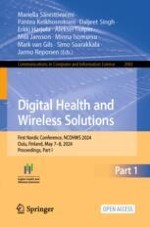1 Background
2 Materials and Methods
3 Results
3.1 Teachers’ Experiences of the Implementation of Education
3.2 Teachers’ Experiences of Learning in Educational Development
Main category | Subcategory | Statement examples |
|---|---|---|
Teachers’ experiences of the implementation of the specialisation education | The variation in the demands of the study courses | “The high learning objectives of the studies, which the contents of the study courses do not reach. Variability between study courses; the level of requirements and the workload for students vary significantly from one to another. The EQF6 level needs to be re-evaluated in all study modules.” |
The work-life relevance of the study courses | ”The development task has proven to be a good method for applying and strengthening the accumulated skills. Particularly pleasing has been the observation of enthusiasm and commitment to development and collaboration with the client of the development task. Development tasks carried out for one's own employer have been motivating. Through the development work, some students have been attached to new job tasks.” | |
Student-centred studies | ”In my opinion, the selection of elective studies should be guided more effectively for students, for example, advising them on what they should choose based on their interests. There should be a greater emphasis on the role of the tutor in this regard.” “There is a lot of room for improvement in student/user-centeredness when examining the student administration in higher education institutions. “ | |
Commitment to joint development | “Some teachers were more committed to the development of study modules than others. In the field of social and health care digitalisation, things are changing rapidly, so study modules should be constantly developed and updated.” “Within the universities, the allocation of resources was very different. In some schools, there is a lot of staff, and for some, there may be only limited hours available for the actual implementation. Universities of applied sciences have different practices in general operating procedures.” | |
Teachers’ experiences of learning in educational development | Learning together | “The dialogue brought about by the development task with various parties clearly strengthens competence. Additionally, the work done in small groups has proven to be fruitful even in various challenging situations.” “Partner universities of applied sciences have learned a tremendous amount along the way. In hindsight, the division of labor could have been further clarified from the beginning.” |
Enabling self-regulated and systematic learning | “It's great that a student can choose courses they feel they need for developing their skills and assemble their expertise like a puzzle.” “In my opinion, guidance for the selection of elective courses should be even more detailed for students, advising them on what they should choose based on their interests. Emphasis should be placed more on the role of the tutor in this process.” | |
Applying effective pedagogical solutions | “The large number of students affected the types of learning and assessment methods that could be used in the courses. “ | |
Development of the studies and course offerings | “Clear structures and operating methods are important, as well as reaching agreements together. It's also crucial to consider whether specialisation courses could be divided into components, from which those specializing can accumulate credits within a specific timeframe.” “Clarity and simplicity, especially from the customer's perspective, regarding what the entity consists of what to choose, how to enroll, etc.“ |
